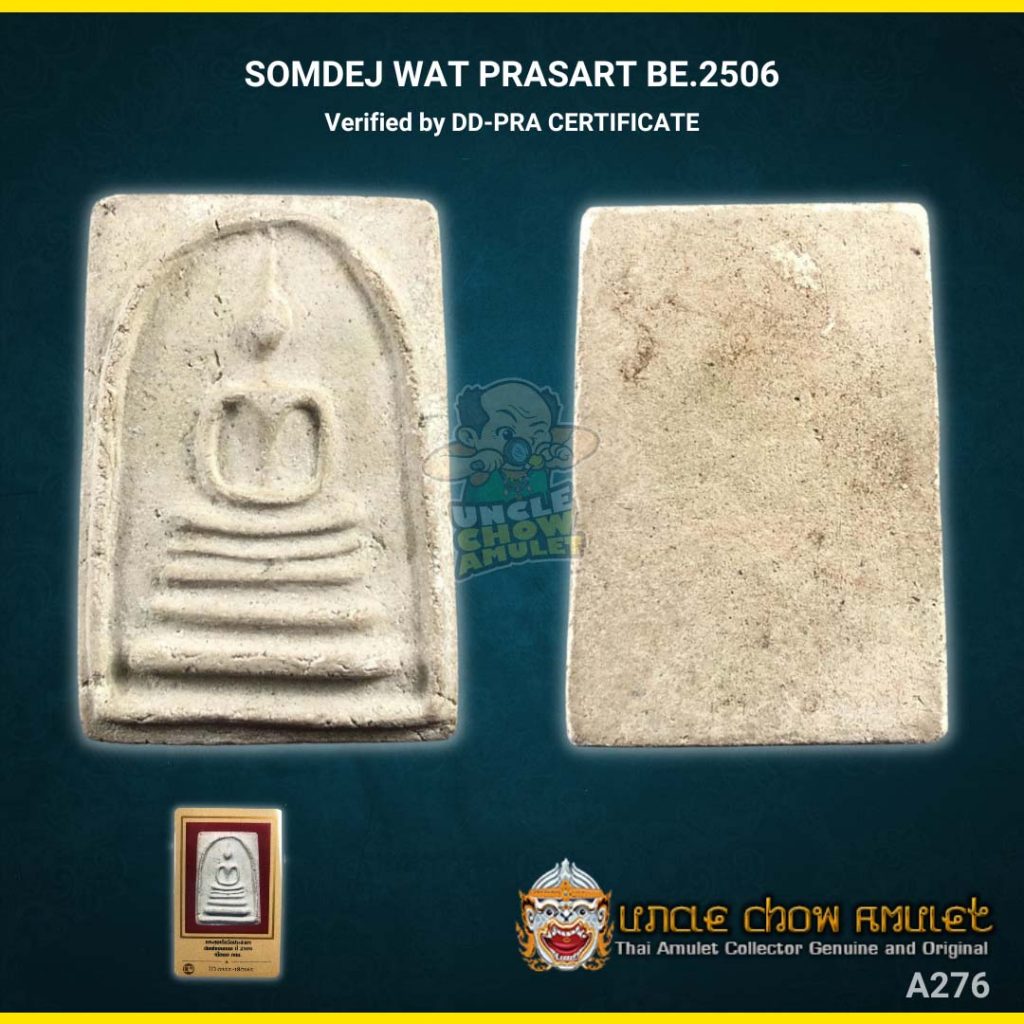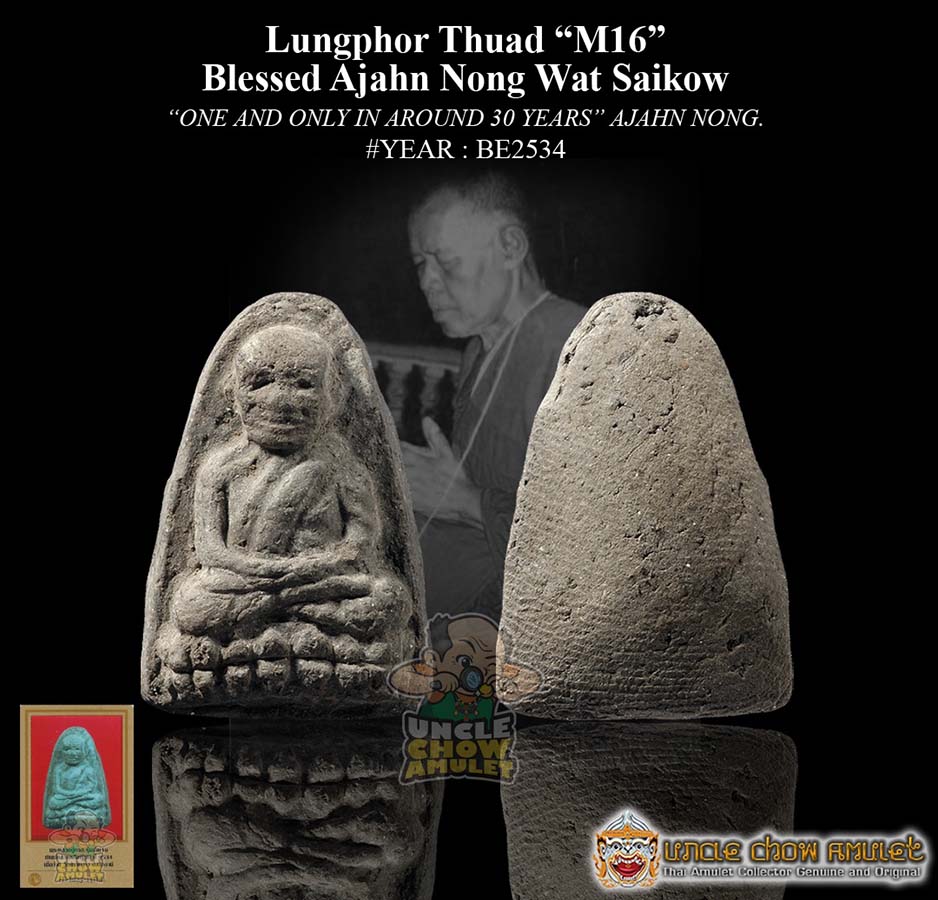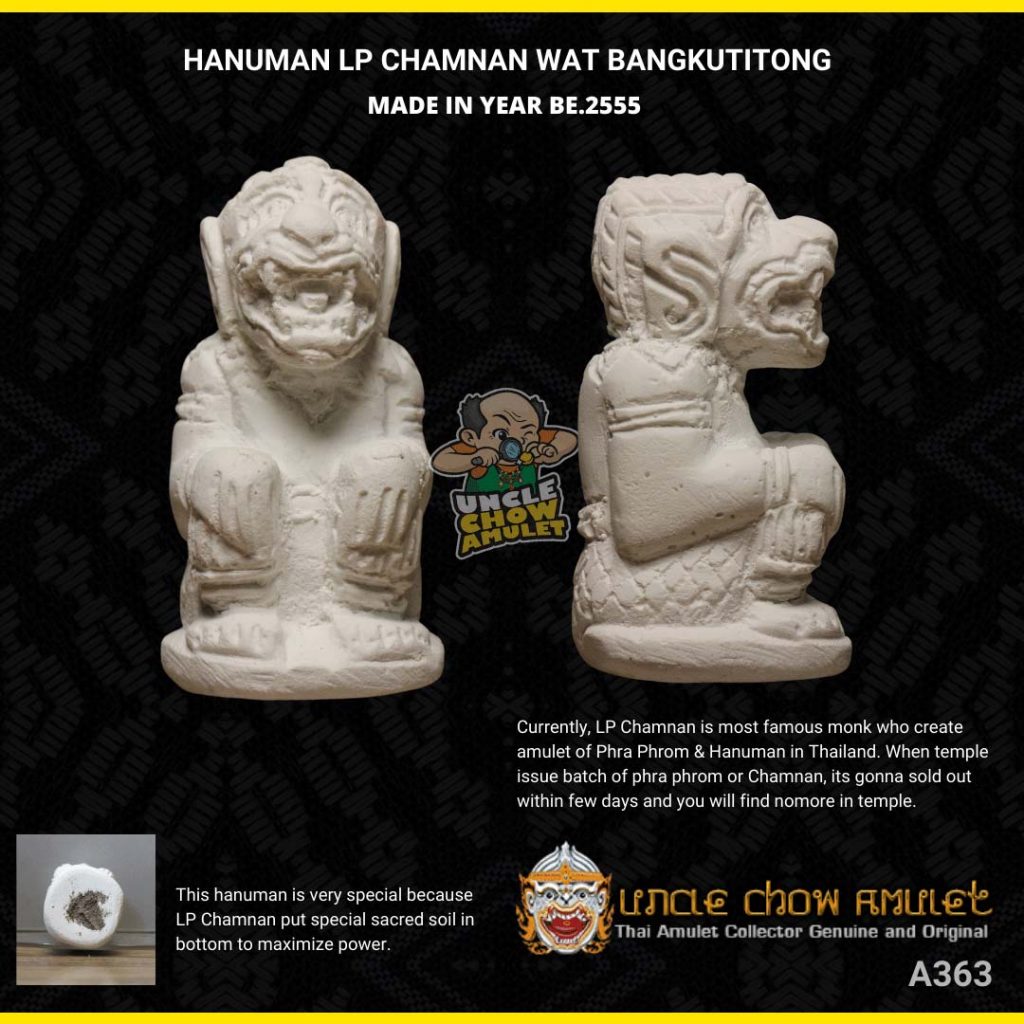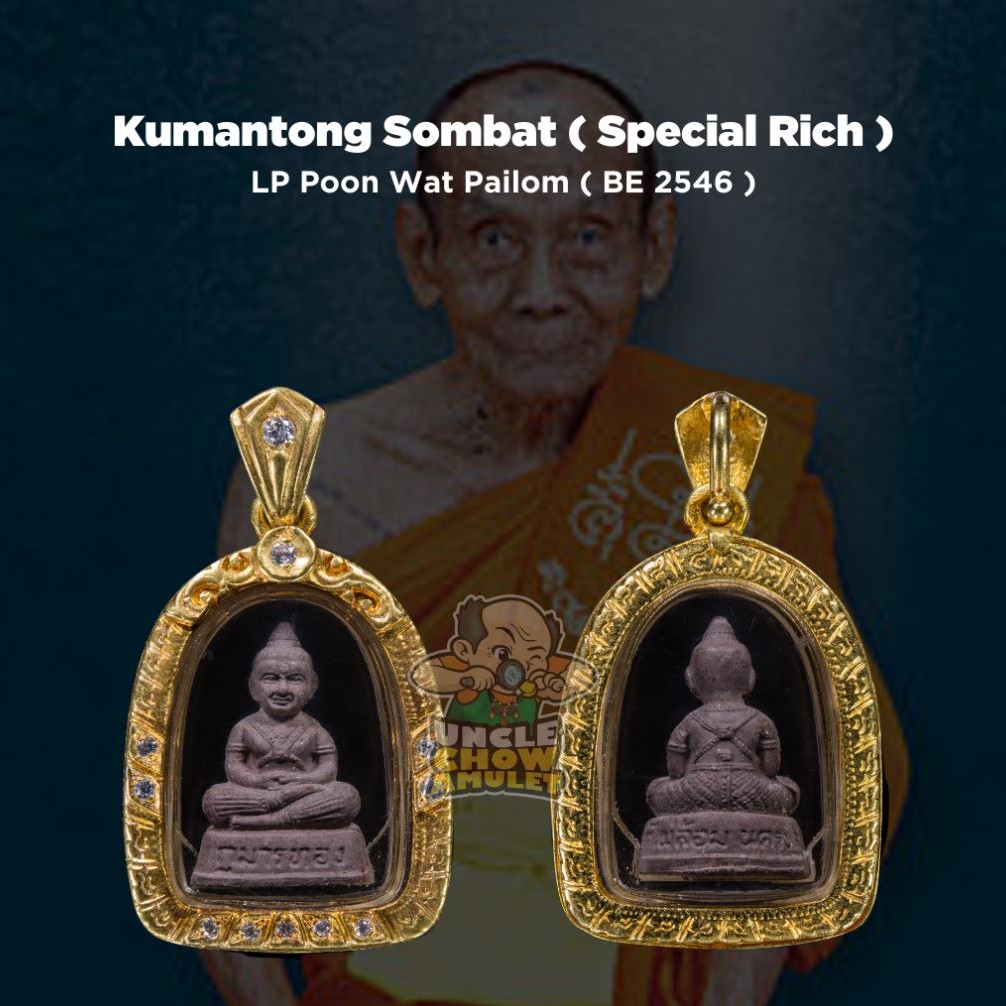Welcome to our store Uncle Chow Amulet Gallery
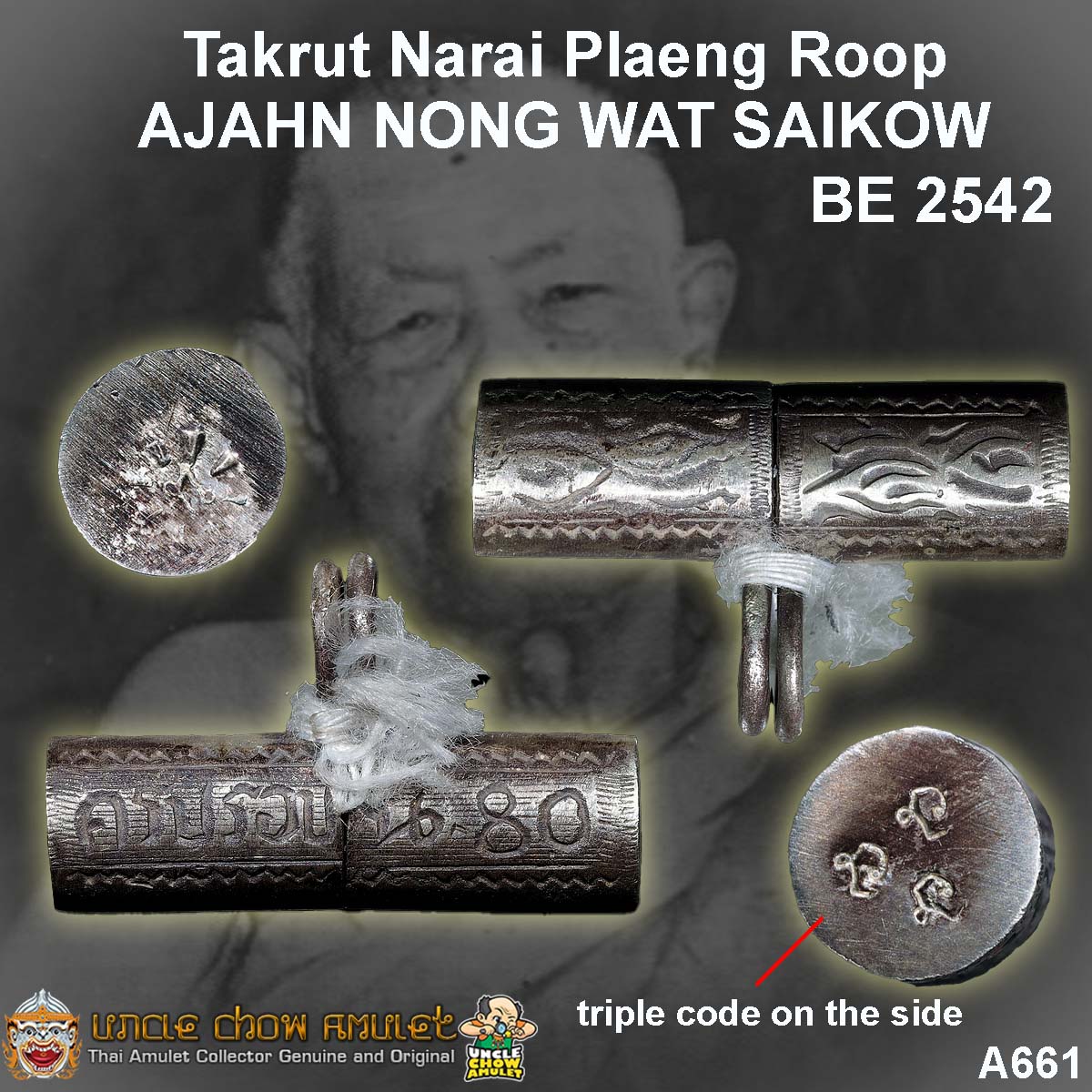
Uncle Chow Amulet
Ajahn Nong Takrut Narai Plaeng Roop
Sold Out
amulet code: A661 -Name of amulet: Takrut Narai Plaeng Roop -Master: Ajahn Nong Wat Saikow -Year: BE 2542 (1999) -Material: Nur Ngern (Blackened Silver) –…
Category : Ajahn Nong Wat Saikow
Share :
Product Details
amulet code: A661
-Name of amulet: Takrut Narai Plaeng Roop
-Master: Ajahn Nong Wat Saikow
-Year: BE 2542 (1999)
-Material: Nur Ngern (Blackened Silver)
– with waterproof casing
This is the 80th Birthday anniversary edition Takrut Narai Plaeng Roop batch, sometimes called the ‘Dork’ batch. Many Singaporeans said that this batch was made and consecrated by Ajahn Nong in 1992 (BE 2535), but Ajahn Nong’s 80th birthday was in 1999 (BE 2542), he also passed away in the same year, so I believe BE 2542 is more accurate.
Ajarn Nong’s Takrut Narai Plaen Roop amulets are renowned for their potency and historical significance. Among his most sought-after creations, these Takrut charms are often compared to the legendary LP Tuad amulets. Their reputation stems from numerous accounts of miraculous escapes and life-saving interventions, particularly during the Vietnam War.
The Takrut Tone Narai Plaeng Roop, Ajarn Nong’s most famous Takrut, has become his signature piece. Soldiers who wore it returned safely, many attributing their survival to its magical protection. Tales of devotees encountering extraordinary blessings and miraculous escapes abound, solidifying the amulet’s legendary status.
Ajarn Nong began crafting Takrut Narai Plaen Roop amulets around 2496 BE, initially using small sheets of iron. Later, he incorporated gun shells, varying the size based on availability. These bullet shell Takrut gained immense fame due to their association with numerous life-saving stories. There is also in a decorative case version made in bullet shell shape, which were made once all bullet shells were depleted, but devotees still called for more Takrut. Both versions ended up becoming equally popular.
Beyond protection, Ajarn Nong’s Takrut are celebrated for their ability to transform bad luck into good fortune and alter fate. The Wicha Narai Plaeng Roop, the ancient magic used in these amulets, is said to possess immense power, akin to the transformative abilities of Pra Narai.
This Wicha, which involves creating a Takrut with the image of Pra Narai, is highly specialized and requires mastery of advanced techniques. Few practitioners possess the skill to successfully execute this spell, making such amulets extremely rare.
The legend of Somdej Pra Puttajarn (Ajahn Toh) Prohmrangsri, a renowned monk who used the Wicha Narai Plaeng Roop to alter his appearance, further underscores the potency of this ancient magic.
A fascinating tale from the Biography of Somdej Pra Puttajarn (Ajahn Toh) Prohmrangsri, written by Maha Amamat Praya Tip Gosaa and Pra Kroo Plad Maha Thaeranuwatra, sheds light on the power of ancient magic. Published to commemorate the 200th anniversary of the Ratanakosin Era, the biography recounts the story of Somdej Dto’s evasion of royal recognition.
When King Rama 4 offered Somdej Dto a position of honor, the monk sought refuge in the forest, rejecting the prestigious role. Despite the king’s efforts to locate him through nationwide searches, Somdej Dto remained elusive. Employing the Wicha Pra Narai Plaeng Roop, a potent magic capable of altering appearance, he successfully disguised himself, evading recognition from those who knew him.
This tale underscores the extraordinary power of the Wicha Pra Narai Plaeng Roop and the lengths to which individuals may go to preserve their desired way of life.
